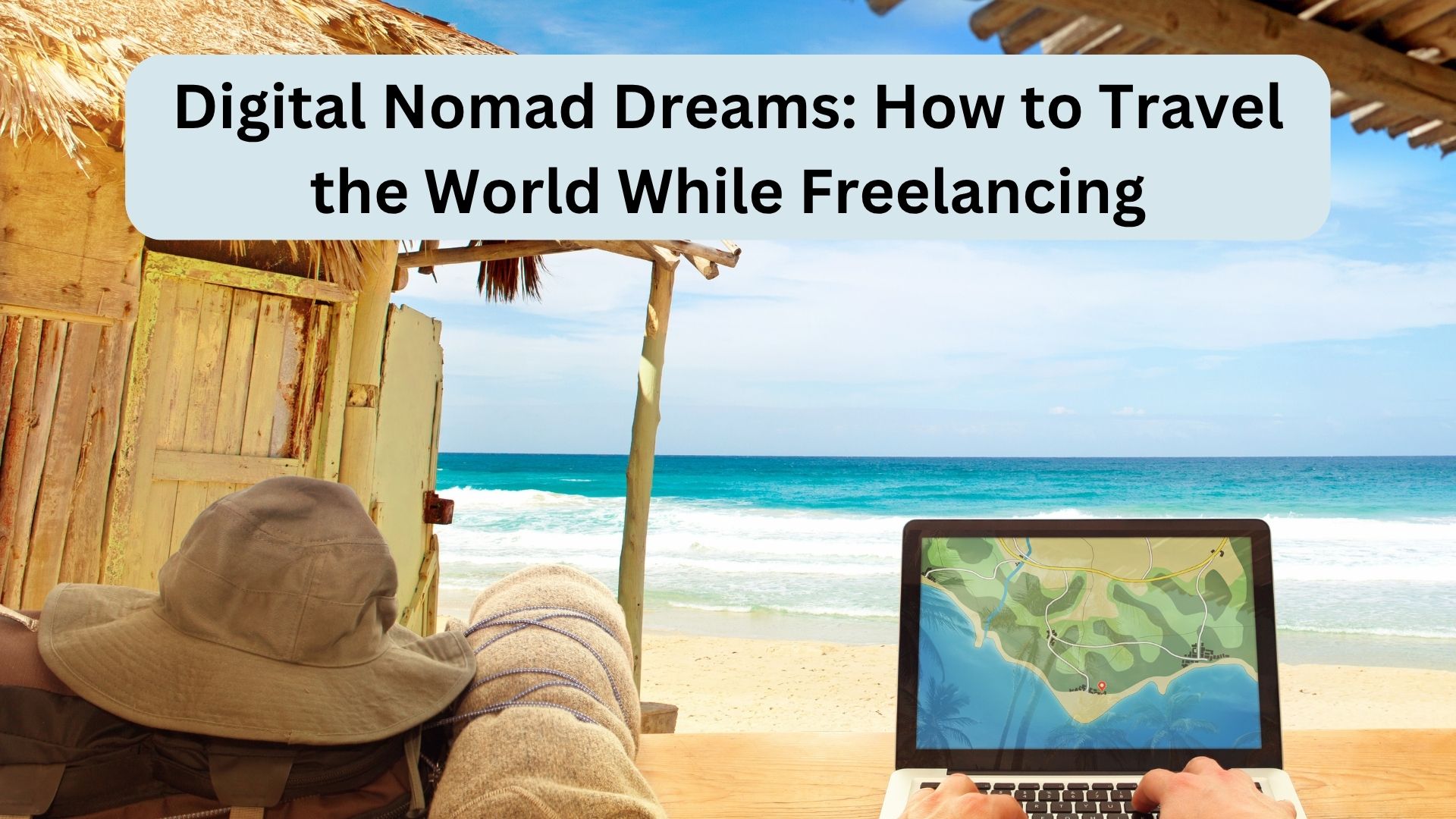The dream is real: sipping coffee in a beachside cafe in Bali, answering client emails from a cabin in the Alps, or submitting work before a sunset stroll through the streets of Lisbon. Welcome to the life of a digital nomad—a remote worker who blends travel with work freedom. If you’re a freelancer with a laptop, Wi-Fi connection, and wanderlust, this lifestyle is more attainable than ever.
In this post, I’ll share my top strategies, tools, and real-world tips to help you balance globetrotting with freelance success. Whether you’re planning your first workation or aiming for full-time travel, here’s your guide to doing it right.
What is a Digital Nomad?
A digital nomad is someone who works remotely while traveling to different cities or countries. Unlike traditional tourists, nomads stay for weeks or months, immersing in the culture while continuing to work and earn.
Benefits:
- Location freedom
- Cultural exposure
- Lower cost of living in some destinations
- Better work-life balance
Challenges:
- Time zone management
- Internet reliability
- Visa regulations
- Loneliness or burnout
Being a nomad isn’t a permanent vacation—it’s a lifestyle that blends work, travel, and discipline.
Step 1: Prepare Your Business for the Road
Before you take flight, ensure your freelance business is portable.
| Task | Why It Matters |
|---|---|
| Go paperless | Access everything from the cloud |
| Use cloud-based tools | Work from any location |
| Automate admin tasks | Save time and mental bandwidth |
| Set client expectations | Build trust while traveling |
Recommended Tools:
- Google Workspace or Notion for docs and planning
- Payoneer or Wise for international payments
- Zoom + Loom for client calls
- Calendly for scheduling across time zones
Step 2: Choose Digital-Nomad-Friendly Destinations
Some cities are better suited for remote work than others. Look for destinations with:
- Reliable internet (check NomadList.com)
- Coworking spaces and coffee shops
- Affordable cost of living
- Digital nomad communities
| Region | Popular Nomad Cities |
| Asia | Bali, Chiang Mai, Ho Chi Minh, Tokyo |
| Europe | Lisbon, Barcelona, Tbilisi, Budapest |
| Latin America | Medellin, Mexico City, Lima |
| Oceania | Sydney, Auckland |
Tip: Start with countries offering digital nomad visas or extended stays (e.g., Portugal, Estonia, Costa Rica).
Step 3: Pack Smart for Work and Travel
You need gear that supports both mobility and productivity.
Packing List:
- Lightweight laptop + charger
- Universal adapter
- Noise-canceling headphones
- Backup drive or cloud sync (Dropbox, Google Drive)
- Travel router or pocket Wi-Fi
- Ring light for Zoom calls
- VPN for secure browsing
Optional Tools:
- Kindle for reading
- Foldable laptop stand
- Ergonomic mouse and keyboard
Less is more. Choose multi-use items and prioritize comfort.
Step 4: Create a Routine Anywhere
Structure helps you stay productive on the road. While spontaneity is fun, a loose routine keeps your business afloat.
| Time | Routine Example |
| 7:30 AM | Wake up and stretch |
| 8:00 AM | Check emails and prioritize tasks |
| 9:00 AM | Deep work (client tasks, writing, editing) |
| 12:00 PM | Lunch and walk break |
| 1:00 PM | Lighter tasks (calls, admin, social media) |
| 4:00 PM | Explore the city, meet locals |
| 8:00 PM | Quick check-in or journaling |
Tips:
- Use your peak productivity hours
- Batch client calls on fixed days
- Set clear work hours with clients
Step 5: Stay Connected and Secure
Remote work hinges on connectivity and safety.
Tips to Stay Online and Safe:
- Get local SIM cards or international plans
- Use a VPN for secure access
- Avoid public Wi-Fi for sensitive tasks
- Backup data weekly
Tools I Trust:
- NordVPN or Surfshark
- ExpressVPN for faster speeds
- Backblaze for automatic cloud backup
Step 6: Handle Time Zones Like a Pro
Juggling time zones is tricky but manageable with planning.
Best Practices:
- Use tools like World Time Buddy
- Display client time zones in your calendar
- Offer clear availability (e.g., M–F, 10am–2pm EST)
- Use Loom videos to explain work asynchronously
Clients appreciate transparency and flexibility more than rigid availability.
Step 7: Find Community While Abroad
Loneliness is real. Build connections wherever you go.
Ways to Connect:
- Join local coworking spaces
- Attend meetups via Meetup.com or Facebook Events
- Use Nomad List forums or Slack groups
- Follow digital nomad hashtags on Instagram
Traveling doesn’t mean isolation. It’s a chance to meet like-minded professionals and build your network globally.
Step 8: Take Care of Yourself on the Road
Burnout doesn’t disappear just because you’re on a beach. In fact, it can creep up even faster without boundaries.
Wellness Tips:
- Sleep at least 7 hours
- Stay hydrated (especially when flying)
- Limit alcohol and caffeine
- Move daily (walks, yoga, dance)
- Plan tech-free days or half-days
Mindset matters just as much as Wi-Fi.
Cost of Living Comparisons for Digital Nomads
| City | Average Monthly Cost (USD) | Internet Speed | Living Notes |
| Bali | $900–$1,200 | 30–50 Mbps | Ideal for beginners, strong nomad community |
| Lisbon | $1,500–$2,000 | 100+ Mbps | Great culture, EU access |
| Medellin | $800–$1,100 | 50–100 Mbps | Affordable, vibrant lifestyle |
| Chiang Mai | $700–$1,000 | 50 Mbps | Super low cost, easy visa runs |
| Barcelona | $2,000–$2,500 | 100+ Mbps | Beautiful but pricier |
Final Thoughts: Freedom Requires Planning
Becoming a digital nomad is more than a travel trend—it’s a personal growth journey. You’ll gain confidence, flexibility, and global perspective. But it takes preparation, consistency, and a mindset shift.
Your laptop becomes your office, the world becomes your view.
Start small: book a 1-week local workation, test your setup, and then expand. With the right systems in place, your freelance career can support the life you’ve always dreamed of.
Want more digital nomad tips, tools, and behind-the-scenes content? Subscribe to my newsletter for real stories and smart strategies for work-from-anywhere freedom!







Leave a Reply